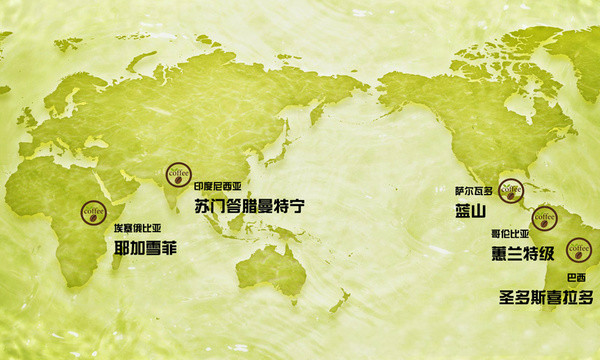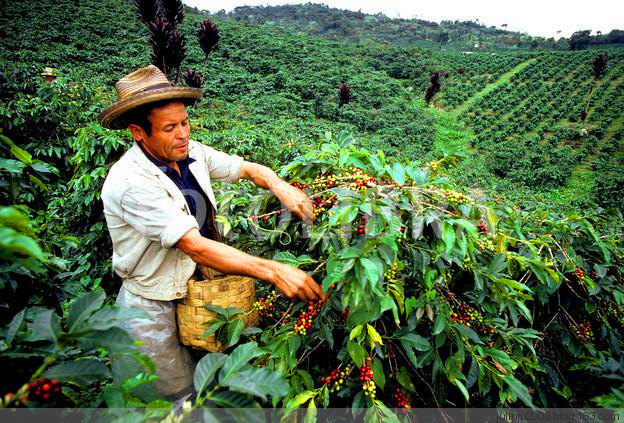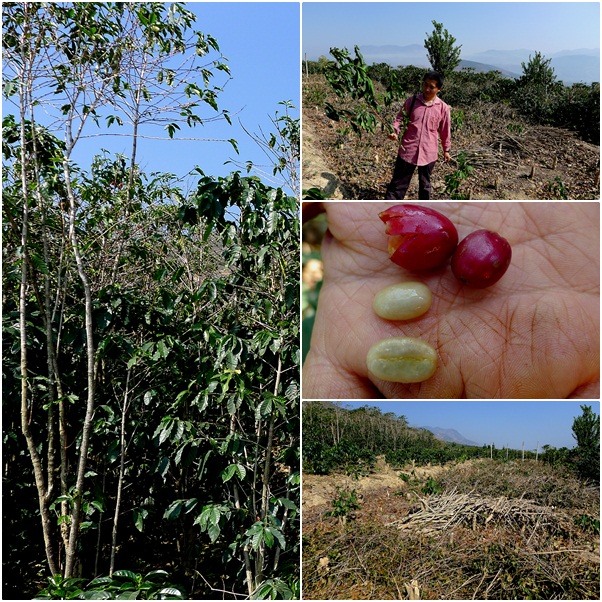Iron pickup or bourbon? Iron pickup coffee beans iron pickup coffee beans price Ethiopian water wash
Iron pickup "Typica" iron pickup, the name sounds majestic, but in fact it is not so strong. It has weak physique, poor disease resistance, easy to catch rust leaf disease and less fruit yield. It is one of the oldest native varieties in Ethiopia, and many Arabica are derived from iron pickups!
The parietal leaf of the iron pickup is bronzed, and the bean grain is large, pointed, oval or thin. Everyone is familiar with the well-known Mantenin, Blue Mountain, Elephant Bean, Kona, Yunnan Dou …... Wait. They are all derived from iron pickups.
Bourbon "Bourbon" bourbon is an ancient and excellent variety juxtaposed with iron pickup, and some botanists believe that bourbon is an early variety of iron pickup transplanted to Yemen.
Bourbon is almost all round beans, beans are a little smaller than tin card, ripening later, but the yield is 30% more than tin card. It is suitable for growing above 1200 meters above sea level, and its flavor is obviously more prominent than those below 1000 meters, but bourbon has a disadvantage that it will rest for a year as a result. Round bourbon is full of vitality, and its resistance to rust leaf disease is better than that of iron pickup, but its flavor is as good as it, or even better.
In 1810, some of the round beans in Bourbon Island mutated into pointed beans, which is known as the "pointed bourbon". It is characterized by a caffeine content of only half, low output, weak physique, and extremely rare, just like a weak aristocratic teenager.
In addition, the biggest thing that iron pickup and bourbon have in common is that they both need the protection of shade trees. if there is no shade tree to help it block the sun, it is not only not conducive to its growth, but also greatly reduces the flavor of coffee beans.
Country: Ethiopia
Grade: G2
Producing area: Dama Village, Yega Xuefei area
Altitude: 1800-2200 m
Treatment: washing
Variety: native species (Heirloom)
Producer: Dama Cooperative
Flavor: lemon peel, black tea, dried longan, flower fragrance
There are eight major producing areas in Ethiopia: Ekempti, Limu, Illubabor, Djimma, Harrar, Teppi/Bebeka, Sidamo and Yirgacheffe. Yirgacheffe is located in the Gedeo region of southern Ethiopia, and the jurisdiction of this area is better known as Yegashafi and Kochere. As the coffee produced by Yirgacheffe has a unique flavor and is widely loved, it has its own style in product classification and has always occupied a place in the global boutique coffee market. Yirgacheffe, located in Sidama province, is itself a small town, with three small producing areas Wenago, Kochere and GelenaAbaya nearby. Because the flavor of coffee produced is almost the same as that of Yega Sheffield, Kochere is also classified as Yega Sheffield. Ethiopia implemented a new trading and grading system in November 2009. the Commodity Exchange (ECX) was set up, and coffee and other agricultural products were auctioned by this official body. In addition to Yega Xuefei, three new by-production areas, Wenago, Kochere and GenlenaAbaya, were added. It can be seen that the flavor of these three production areas is very meticulous and can be subdivided. Since the implementation of the ECX system in 2008, most raw coffee beans have been sold by auction, but cooperatives are not under this jurisdiction, and they can directly contact buyers, negotiate prices and export.
The DamaCoop Cooperative (DamaCoop) is one of the 26 alliances of the Yegashev Coffee Farmers' Cooperative Union (TheYirgacheffeCoffeeFarmersCooperativesUnion) (YCFCU). YCFCU now represents more than 50, 000 coffee farmers belonging to more than 300000 family representatives, founded in June 2002. all 26 alliances are located in the southern Gedeo region of Ethiopia and is an important coffee producing area in Ethiopia. The Dama Cooperative (DamaCoop), made up of 1728 male and 237 female family members of small coffee farmers, located in the Yirgacheffe producing area, was founded in 1979 and joined the YCFCU Cooperative Alliance in 2002. These small coffee farmers cultivate an average of less than 4 hectares of coffee at an altitude of about 1800-2200 meters. Coffee varieties are mainly a mixture of Typica and Heirloom (local native species). Every one or two years, members of the cooperative will vote in an election to elect an executive committee, and the executive committee can decide on the purchase of new equipment, exchange business information with members, and how to pay for transactions. In addition, YCFCU will also assign professional managers to cooperatives to provide guidance and advice on harvest, production and other procedures, so as to increase production and improve quality. The establishment of the cooperative allows its farmers to avoid low-cost exploitation by purchasers, and when the economy is in trouble, the cooperative can also provide loan assistance, which is very positive for both farmers and coffee production.
This batch of Dama Cooperative (DamaCoop) is a washing batch. Flavor features: lemon peel, black tea, dried longan, flower fragrance, kumquat, sweet and smooth, clear acidity, a variety of fruit floral flavor, sweet aftertaste.

Important Notice :
前街咖啡 FrontStreet Coffee has moved to new addredd:
FrontStreet Coffee Address: 315,Donghua East Road,GuangZhou
Tel:020 38364473
- Prev

Are Yega Sheffield Coffee beans Arabica beans? the characteristics of Yega Chefe Coffee beans
Coffee has more than a hundred varieties of coffee, the more common coffee are: Arabica Arabica, outstanding personality, unique flavor, is the main boutique coffee, mainly used in coffee shop management and high-end coffee market supply; Robusta Robusta, rough flavor, high caffeine content, does not belong to
- Next

Is Yega Sheffield sun-treated banchimaji a Robusta species or an Arabica species? Coffee
Coffee has more than a hundred varieties of coffee, the more common coffee are: Arabica Arabica, outstanding personality, unique flavor, is the main force of boutique coffee, mainly used for coffee shop management and high-end coffee market supply; Robusta Robusta, rough flavor, high caffeine content, not boutique coffee, often used for instant coffee processing and Italian coffee mixed beans. Ethiopia Typi
Related
- Detailed explanation of Jadeite planting Land in Panamanian Jadeite Manor introduction to the grading system of Jadeite competitive bidding, Red bid, Green bid and Rose Summer
- Story of Coffee planting in Brenka region of Costa Rica Stonehenge Manor anaerobic heavy honey treatment of flavor mouth
- What's on the barrel of Blue Mountain Coffee beans?
- Can American coffee also pull flowers? How to use hot American style to pull out a good-looking pattern?
- Can you make a cold extract with coffee beans? What is the right proportion for cold-extracted coffee formula?
- Indonesian PWN Gold Mandrine Coffee Origin Features Flavor How to Chong? Mandolin coffee is American.
- A brief introduction to the flavor characteristics of Brazilian yellow bourbon coffee beans
- What is the effect of different water quality on the flavor of cold-extracted coffee? What kind of water is best for brewing coffee?
- Why do you think of Rose Summer whenever you mention Panamanian coffee?
- Introduction to the characteristics of authentic blue mountain coffee bean producing areas? What is the CIB Coffee Authority in Jamaica?

